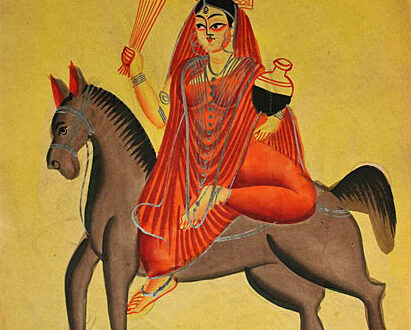Bhagavad-Gītā Chapter 1
1.1 Dhṛtarāṣṭra said: Assembled together on the field of dharma, on the field of the Kurus, eager to fight, what did they, especially mine own and the Pāṇḍavas, do, Sañjaya?
dhṛtarāṣṭra uvāca /
Dhṛtarāṣṭra (dhṛtarāṣṭraḥ); said (uvāca):
dharma-kṣetre kuru-kṣetre samavetā yuyutsavaḥ /
māmakāḥ pāṇḍavāś caiva kim akurvata sañjaya // 1.1 //
Assembled together (samavetāḥ) on the field of dharma (dharma-kṣetre), on the field of the Kurus (kuru-kṣetre), eager to fight (yuyutsavaḥ), what (kim) did [they] do (akurvata), especially (eva) mine own [sons/principle warriors?] (māmakāḥ) and (ca) the Pāṇḍavas (pāṇḍavāḥ), Sañjaya (sañjaya)?
Commentary
It’s interesting to me that it is Dhṛtarāṣṭra that calls the Kurukṣetra a field of dharma (dharma-kṣetra) at the beginning of the Bhagavad-Gītā (BhG 1.1). What does he mean when he says it? Does he believe he is fighting a just war? Does he simply mean that it is a field upon which warriors (kṣatriyas) have the opportunity to enact their specific roles?
In my experience, I’ve noticed that when rhetorically glorifying the battlefield and the war, people tend to go about declaring that the battlefield was a field of dharma, freely quoting Dhṛtarāṣṭra as an authority, without bothering to interrogate what he meant by the phrase. The notion of a dharma-kṣetra or a field of dharma is not just a free-floating idea within the Bhagavad-Gītā. It arises out of the mouth of Dhṛtarāṣṭra. That contextual background is worth considering when interpreting the phrase.

You May Also Like
